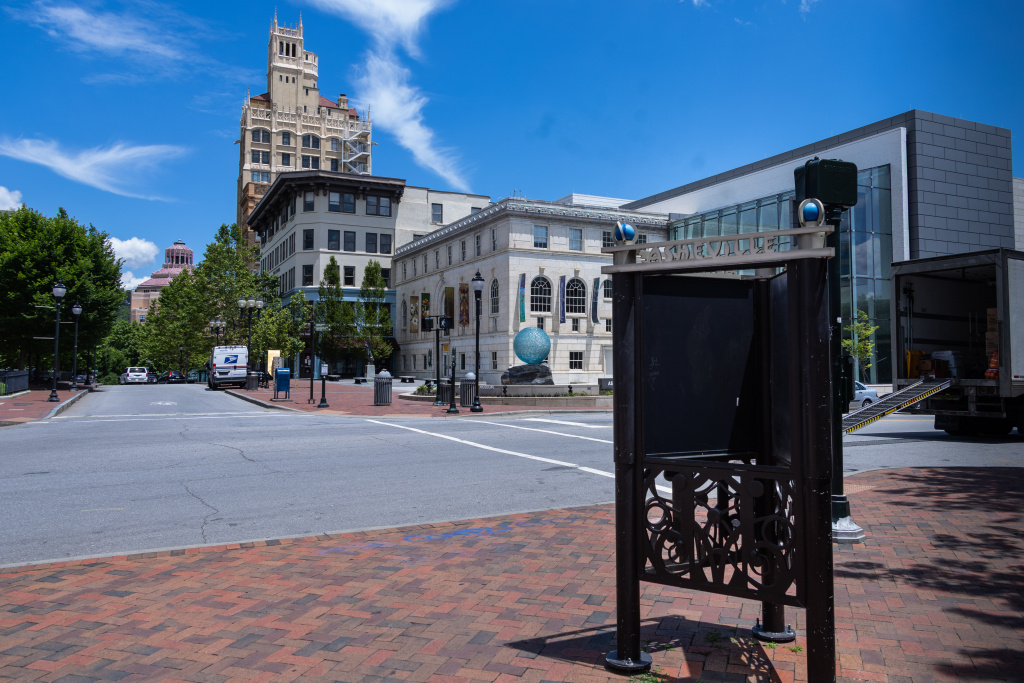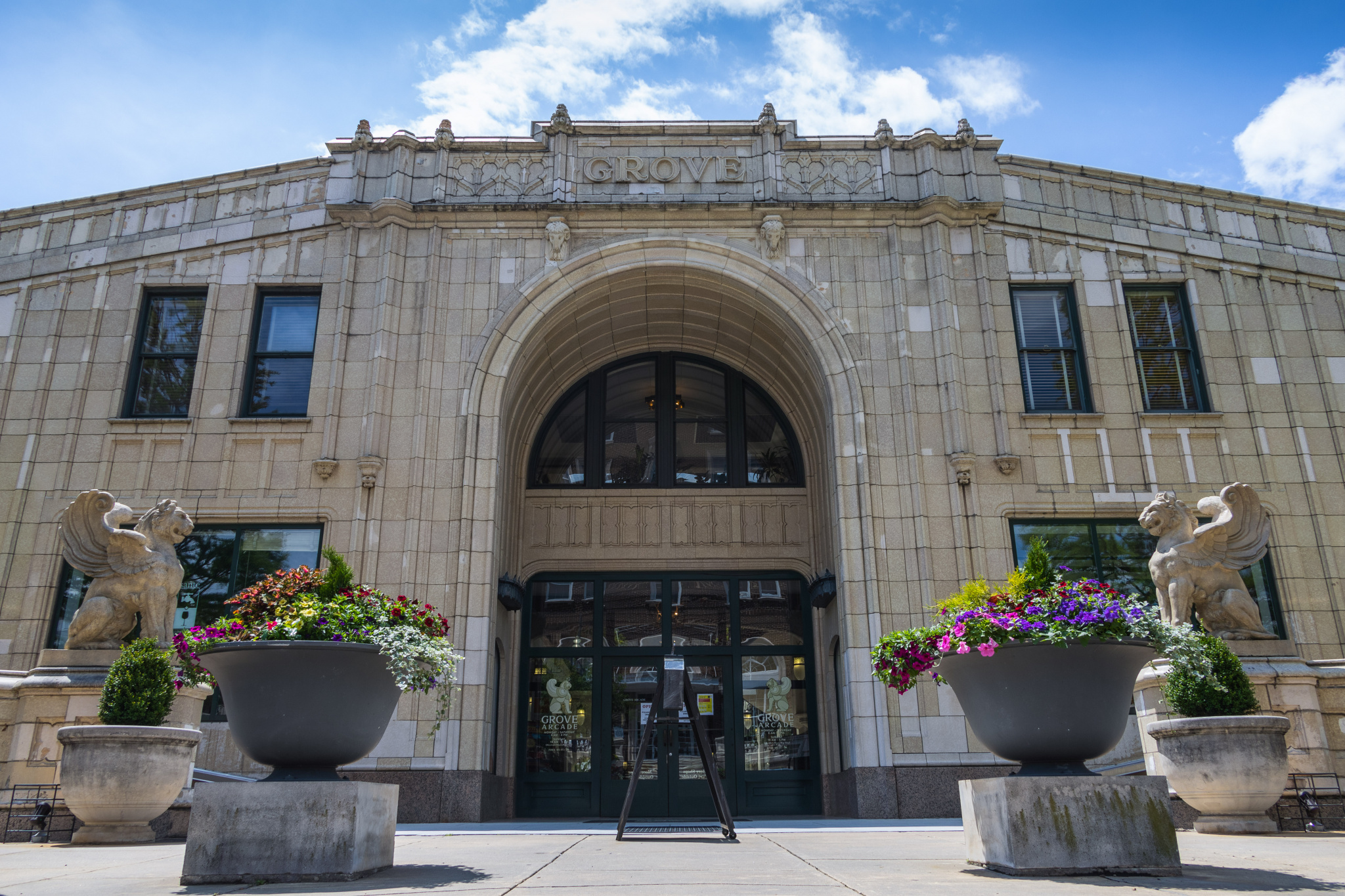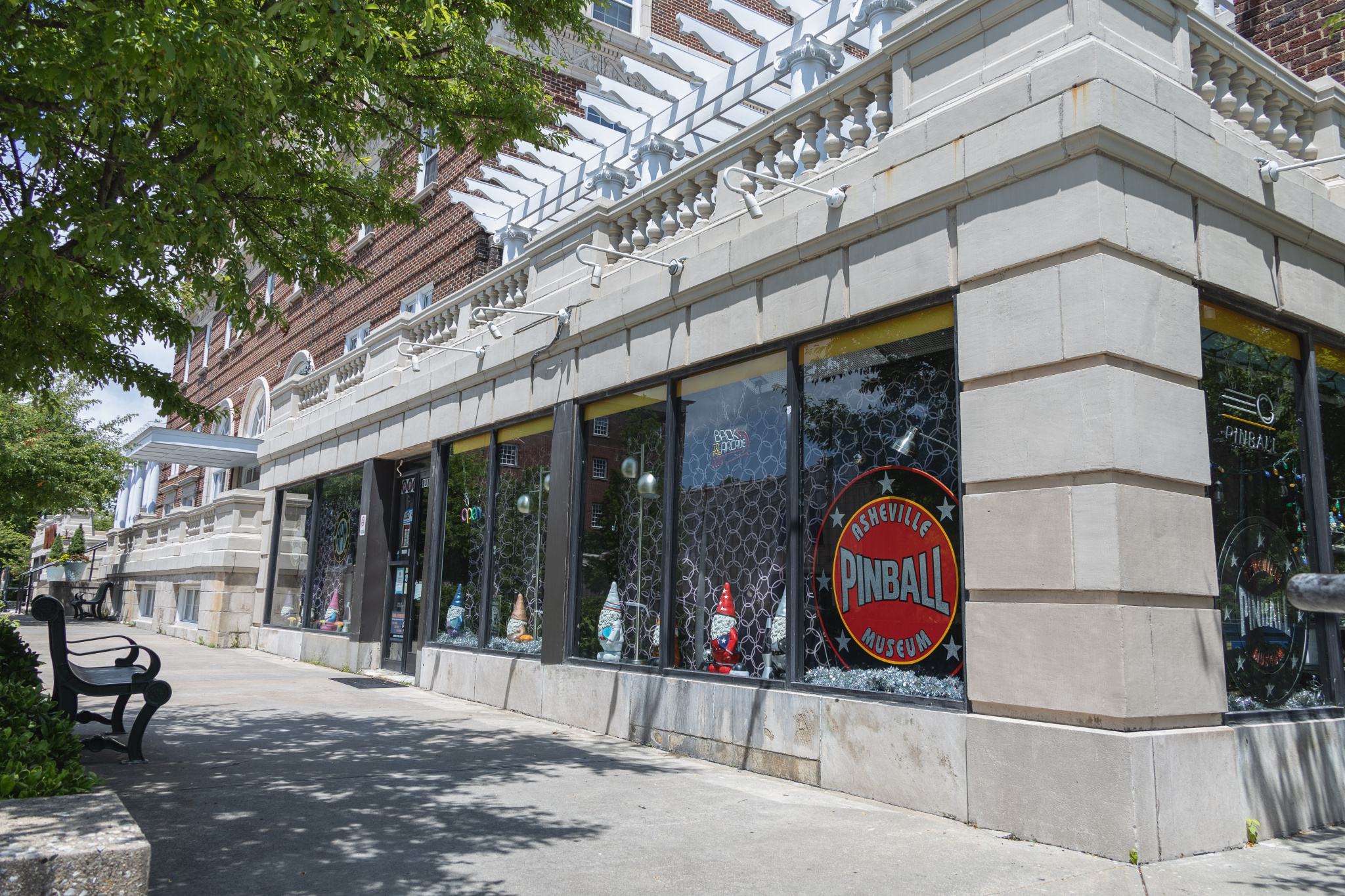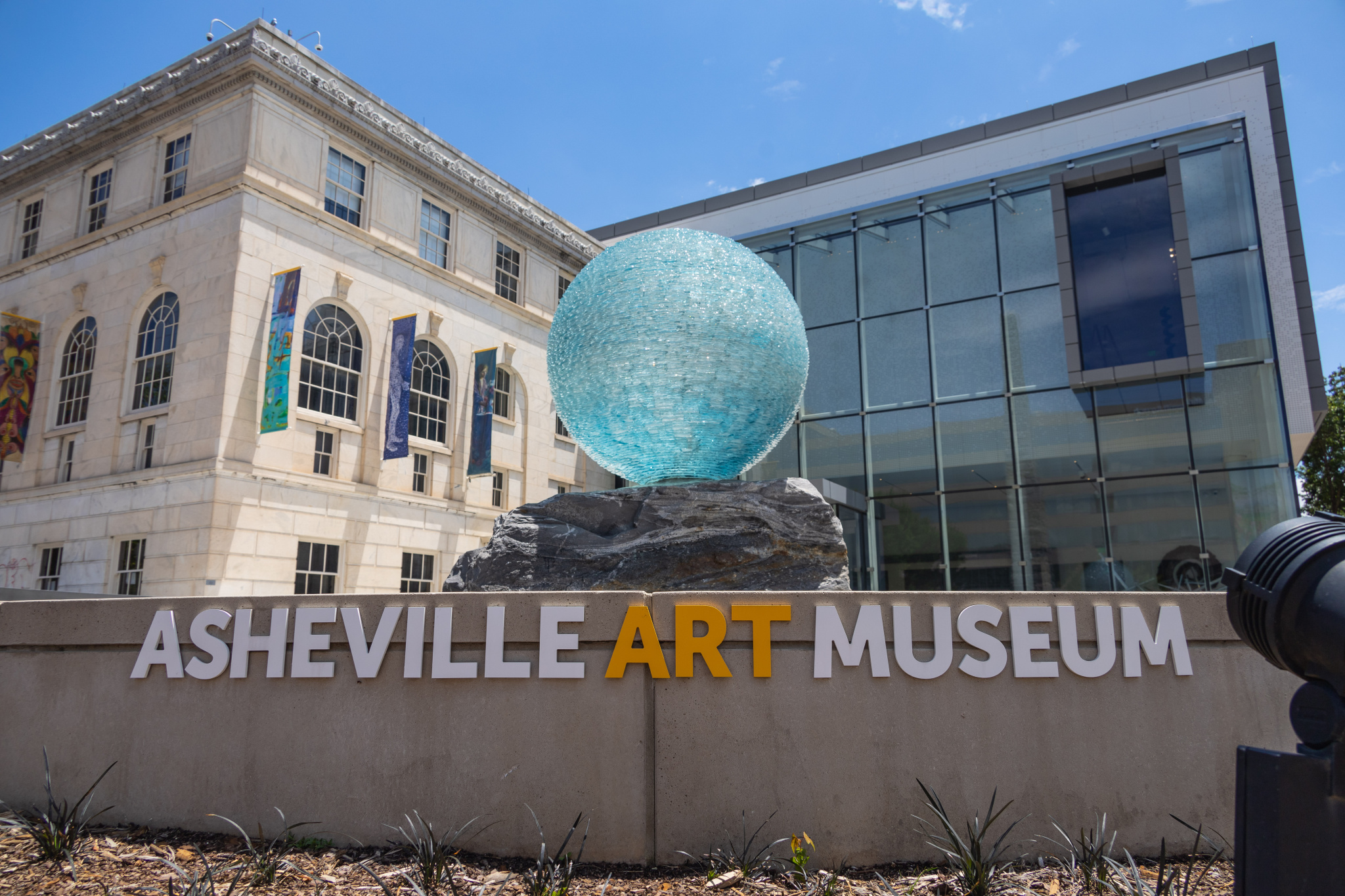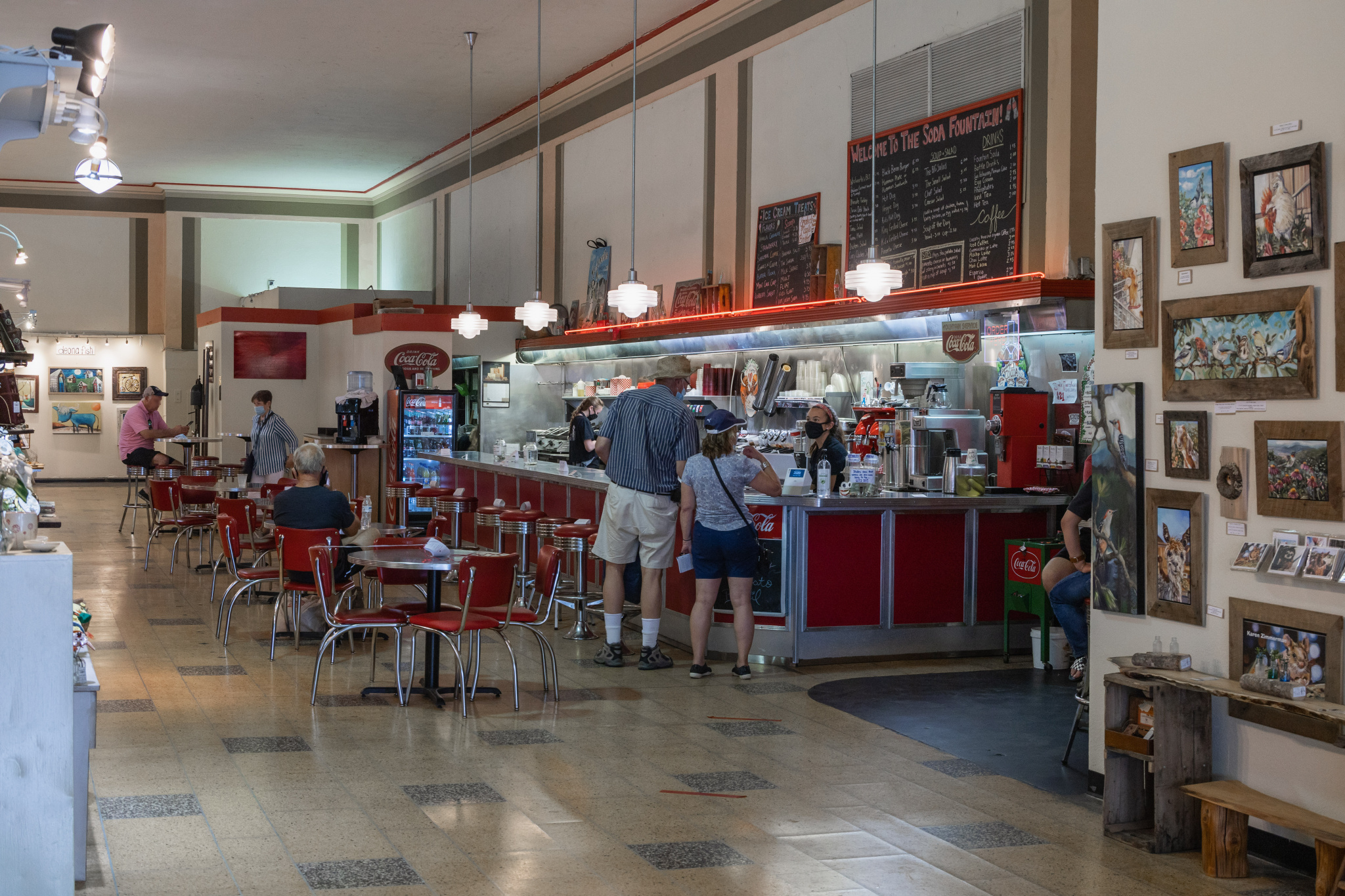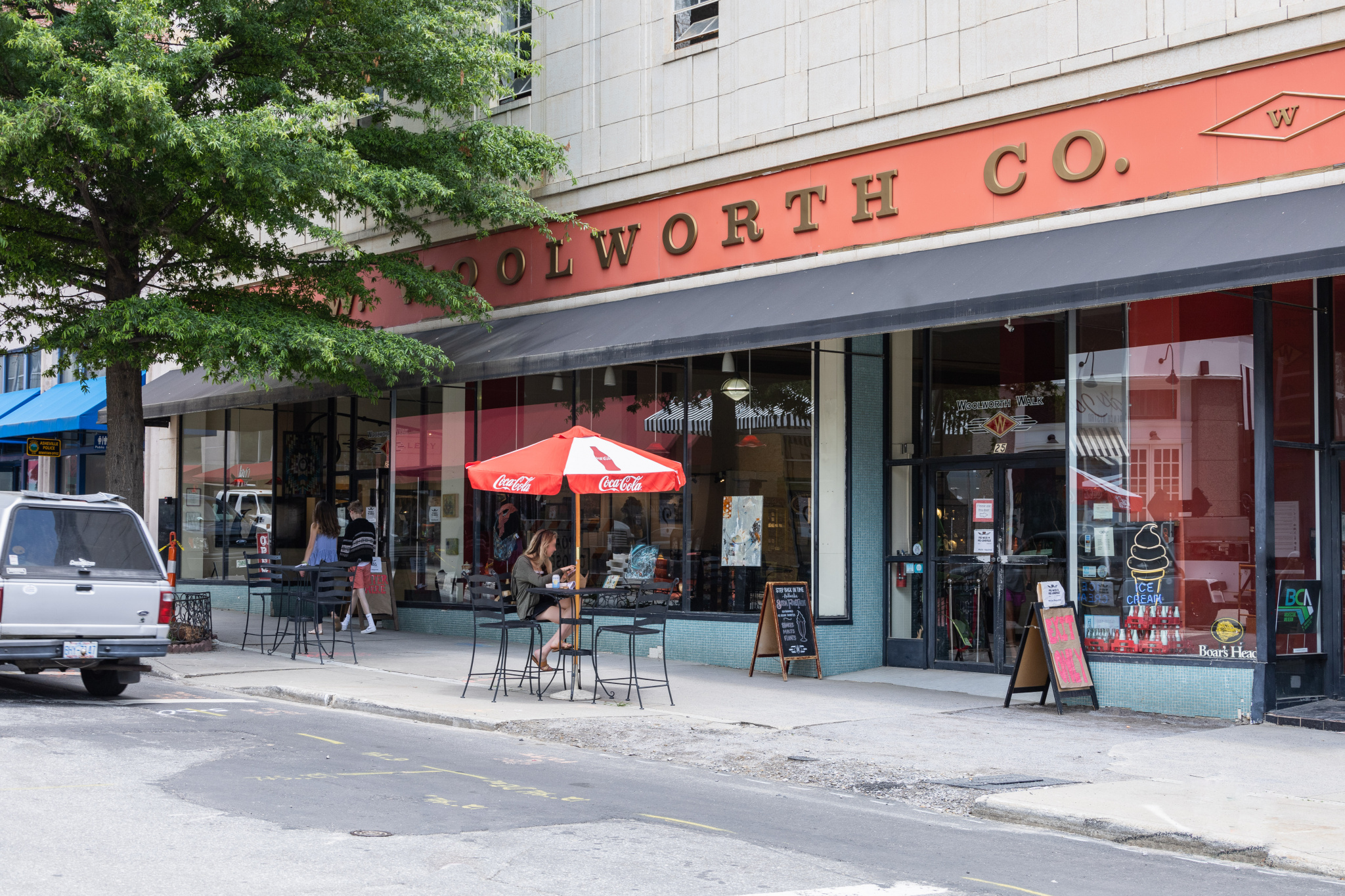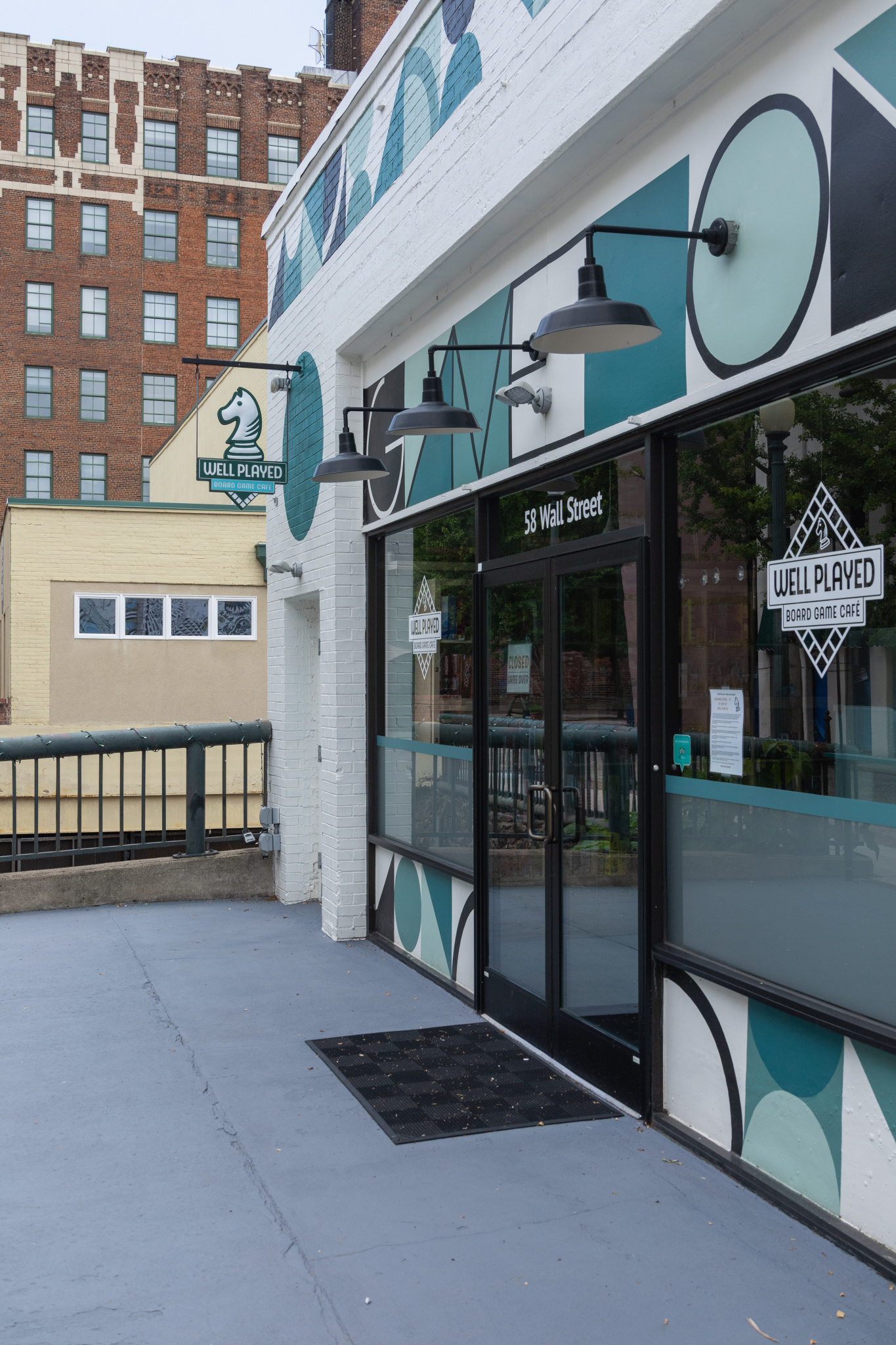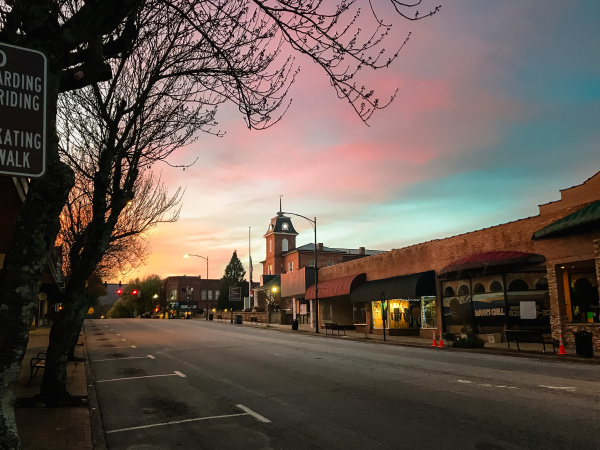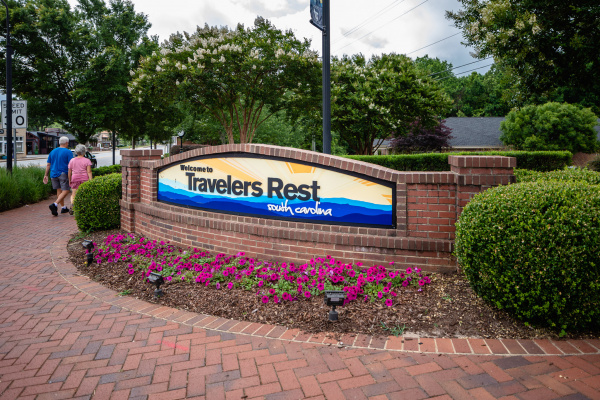Due to the COVID-19 pandemic, current businesses’ hours may differ from what is posted on their websites. Also, keep in mind that some may require guests to wear face coverings before entering their doors.
Asheville, North Carolina, is unique. Steeped in history, the city is over 225 years old and has been the Buncombe County seat its entire existence. In fact, it has been the county seat longer than it’s been named Asheville: It was chosen as the site for the courthouse in 1792, then incorporated and named for North Carolina Gov. Samuel Ashe in 1797.
“The Land of the Sky” wasn’t very important until the Western North Carolina Railroad came in 1880 and boosted the economy. People started visiting the area in an effort to improve their health, and tourism became one of the town’s major industries. In 1887, the same year that George Vanderbilt first visited, Asheville built the second electric streetcar system in the nation.
Today, Asheville has the second most surviving Art Deco buildings in the nation (Miami Beach has the most), yet the city has continued its tradition of keeping up with the times. The result is a unique blend of antique and modern.
Biltmore
Website: biltmore.com
One of the most well-known sites in Asheville is Biltmore, the 250-room French Renaissance chateau built by millionaire George Vanderbilt. The house, gardens and grounds are open to ticketed guests for either guided or self-guided tours. Though ticket prices may exceed a college student’s typical budget, Biltmore House is worth saving for the trip. (Biltmore has several virtual tours available on their website if you want a sneak peek, though.)
Vanderbilt began buying the land that would contribute to his estate in 1888 and construction began in 1889. Richard Morris Hunt designed Biltmore House, and famous landscape architect Frederick Law Olmsted designed the formal gardens in addition to giving advice on the rest of the estate grounds. Biltmore was completed in 1895, and Vanderbilt welcomed his first guests on Christmas Eve. The house holds 35 bedrooms, 43 bathrooms and 65 fireplaces as well as a two-storied library, a two-lane bowling alley and a basement swimming pool.
In 1898, Vanderbilt married Edith Stuyvesant Dresser in Paris, and the couple moved to Biltmore after honeymooning in Italy. Their daughter Cornelia was born on Aug. 22, 1900. Cornelia would later marry John Francis Amherst Cecil in All Souls Church in Biltmore Village, which still stands outside the main entrance to the estate.
John and Cornelia Cecil opened Biltmore House to the public in 1930. Requests had been made to open the area to tourism to generate revenue and ease the burden of the Great Depression. Admitting tourists also raised funds to help preserve the estate.
Many of Asheville’s historic buildings were utilized during World War II because of the city’s remoteness. Biltmore was no exception and contributed its share to the war effort. The estate stored priceless works of art from the National Gallery of Art in Washington, D.C., to protect them in case the capital was bombed.
Today, the estate is still owned by the Cecil family, with Cornelia Vanderbilt Cecil’s grandchildren and great-grandchildren overseeing the preservation of America’s largest private residence.
Grove Park Inn
Website: omnihotels.com/hotels/asheville-grove-park
In 1878, Dr. Edwin Wiley Grove developed a better-tasting malaria quinine treatment, which was so intensely bitter that those who took it would almost rather die from malaria than take the quinine. Grove’s product, Grove’s Tasteless Chill Tonic, suspended the quinine in a syrup, making it not quite tasteless but more palatable. It sold more bottles than Coca-Cola by 1890.
Grove suffered from chronic bouts of bronchitis, and his doctors prescribed Asheville’s mountain air to help him recuperate. He established a summer home there in 1898 but purchased land in 1909 and moved to Asheville in 1910.
Grove dreamt of opening a resort built from the raw stone of his land on Sunset Mountain. He couldn’t get any local architects to see his vision, but son-in-law Fred Seely came on board and was able to capture Grove’s concept even though he had no formal architectural training. Grove gave Seely the job, and the inn opened on July 12, 1913. On opening day, William Jennings Bryan truthfully said in his keynote address that Grove Park Inn “was built for the ages.”
As with the Biltmore House, the Grove Park Inn contributed to World War II. The inn was used to detain Axis diplomats, provide a headquarters for the exiled Philippine government, and rehabilitate U.S. Navy officers.
The inn was sold to Dallas businessman Charles Sammons in 1955, who transformed it into a modern resort. In 2013, Omni Hotels and Resorts acquired the property. Today, the main inn still stands with many of its original Roycroft furnishings, but the resort has been expanded to include modern wings as well as a luxury spa.
In addition to the normal resort and spa activities, the Omni Grove Park Inn also hosts the National Gingerbread House Competition every November. Competition houses are typically displayed starting the Friday after Thanksgiving through the first week of January. Admission is free, but there is a $25 parking fee.
Grove Arcade
Website: grovearcade.com
Grove Arcade was also planned by E.W. Grove. After moving to Asheville, Grove became involved in civic projects and development of the city, especially downtown. He loved Asheville and began plans for Grove Arcade in the early 1920s to give life to his new home city. He planned the market with pedestrian thoroughfares and rooftop terraces to be, in his words, “the most elegant building in America.”
The Arcade was originally planned to have a five-story base with a 14-story tower to house shops, living spaces and offices. However, Grove died in 1927 before construction was complete. When the Arcade opened in 1929, only the base was done, but it was still the largest building in the area with 269,000 square feet. In light of the recent stock market crash, the tower was never to be built.
Shops included at the time Grove Arcade opened were a candy store, specialty grocery stores, fruit stands, a cigar store, millinery shops, bookstalls, a haberdashery, beauty parlors and barbershops, a photography center, and a public stenography office. The upper floors were occupied by offices.
This building also has an interesting World War II history. Grove Arcade was occupied by the Postal Accounts Division of the U.S. Post Office during the war. The federal government still owned the Arcade after the war and moved the National Climatic Data Center in 1951.
In the 1980s, the city of Asheville began to negotiate a deal to return Grove Arcade to its original purpose. In 2002, after extensive renovation, Grove’s vision once again lived when the Arcade reopened as a public market. It now houses restaurants, fresh and prepared food vendors and retail and mountain craft shops.
Blue Ridge Parkway
Website: blueridgeparkway.org
The Blue Ridge Parkway is the longest road planned as a single unit in the United States, and Asheville has three access points. But the city had to fight for the road to come its way. Initially, the route went west into Tennessee, but the city of Asheville — then suffering the effects of the Great Depression — convinced U.S. Ambassador to Mexico Josephus Daniels to argue its case. Daniels was able to persuade the administration to change the route of the Parkway to go through Asheville.
The Parkway was first ideated in 1933 when President Franklin D. Roosevelt visited the newly finished Skyline Drive in Virginia. United States Senator Harry Byrd of Virginia suggested extending the Skyline Drive to connect it to the newly established Great Smoky Mountains National Park. Roosevelt liked the idea and asked the governors of Virginia, North Carolina and Tennessee to form a planning team. The Parkway was approved as a public works project on Nov. 24, 1933.
Construction began on Sept. 11, 1935. When World War II began, tourists could travel on 170 miles of the Parkway. Half of the Parkway was finished by the 1950s, and the completed 469 miles connecting Afton, Virginia, and Cherokee, North Carolina, opened to travelers in 1987.
Asheville Pinball Museum
Website: ashevillepinball.com
The Asheville Pinball Museum hearkens back to the pinball arcades of yesteryear. Pay a flat fee of $15 and play all of the pinball and classic video games you want, no quarters or tokens required.
The museum has over 80 pinball and video games, and thus only allows 80 guests in at one time. Once the maximum capacity has been reached, they will place your name on a waiting list and call you when your name is up.
Some games — such as a 1947 Humpty Dumpty game, the first to use flippers — are for display only. And some are for sale. Fun facts are posted around the museum, as well. For example, did you know older pinball machines are less steep than newer machines?
Unfortunately, the Asheville Pinball Museum cannot admit visitors during North Carolina’s Safer at Home Phase 2 COVID-19 restrictions. The Museum will open again when North Carolina enters Phase 3. Watch the Museum’s website and Facebook page for updates and more information.
Asheville Art Museum
Website: ashevilleart.org
The Asheville Art Museum, the third oldest art museum in North Carolina, was established and incorporated in 1948. Originally it was in what was the land sales office of E.W. Grove. The museum showed works by local painters and sculptors only in May through October because the building didn’t have heat.
Soon, the Museum gathered a collection and outgrew its building, moving to the Northwestern Bank Building’s 15th floor (now the Arras Building). It moved again in 1970 to the historic Montford district and expanded its exhibitions to include regional artists, but the new building needed so many repairs it proved problematic. In 1976, the Museum once again moved, this time to the new Asheville Civic Center, enlarging its floorspace, its programming and its collection.
In 1984, the Museum helped initiate the revitalization of downtown Asheville and moved into its Italian Renaissance-style building in Pack Place, the heart of downtown, in 1992. The Museum has undergone many renovations and expansions since 1992. In celebration of its 70th year, the Asheville Art Museum opened its new building at Pack Square.
The Museum collects 20th and 21st century American art with a special interest in how the art of the Southeast fits within that context, specifically within these three categories: western North Carolina and Southern Appalachian artists; artists from Black Mountain College, whether student or faculty (1933-1957); and handmade objects from the region (from early residents including Indians and craftspeople to contemporary studio craft).
Like the Asheville Pinball Museum, the Asheville Art Museum is also temporarily closed during North Carolina’s Safer at Home Phase 2. However, there are several ways you can enjoy the collection from home on its website.
Woolworth Walk
Website: woolworthwalk.com
Asheville’s F.W. Woolworth Co. 5 and 10 Cent Store opened in 1938 and featured the iconic luncheonette. The luncheonette still stands in the historic building and serves original recipes such as egg creams and phosphates, though the old five-and-dime has been replaced with an art gallery. The 2001 renovation of the building has received awards for its historical accuracy.
Woolworth Walk, the largest art gallery in Asheville, is housed in the historic F.W. Woolworth Building, where local artists sell photography, paintings, pottery and handmade crafts.
Old Europe Pastries
Website: oldeuropepastries.com
A local favorite, Old Europe Pastries was established in 1994 by Hungarian baker Melinda Vetro and her then-husband Zoltan. Vetro began training as a pastry chef when just 14 years old. The Vetros moved to Asheville in 1991 and opened Old Europe in 1994. Though they hit a rough patch in 2009 and temporarily closed their doors, Vetro opened the bakery again in 2010. She now runs the bakery with her son Bence.
The pastries are an Asheville favorite and include many gluten-free selections. The Viennese, French and Bavarian pastries provide an Old World flair that’s not too sweet yet still decadent.
Rocket Fizz
Website: rocketfizz.com
Rocket Fizz is a newer store on the Asheville scene, but walking in turns almost anyone into a kid in a candy store. Selling over 8,000 types of candy and over 500 types of bottled soda pop, this nostalgic sweet shop is both sensory and sugar overload. And all of the Rocket Fizz sodas use pure cane sugar, a slightly healthier alternative to the typical soda.
Chocolate Fetish
Website: chocolatefetish.com
Though Asheville is also home to the well-known French Broad Chocolate Lounge, a lesser-known chocolate gem is almost hidden on the other side of downtown. Family-owned The Chocolate Fetish has existed since 1986, but Sue and Bill Foley bought it in 2001. Their daughter Elizabeth has returned to run the business with them. Sue has trained at some of the best confectionery schools in the world, including Chocolate Manon in Brussels, Belgium.
The Chocolate Fetish has won many awards, including the Best Chocolatiers & Confectioners in America Award by The International Chocolate Salon many years over, winning six stars in 2015, 2018 and 2020. Many of their individual chocolates have also won their own accolades.
Well Played Board Game Café
Website: wellplayedasheville.com
This unique café has over 650 games to play while you and your friends grab a bite to eat. With titles such as Ticket to Ride, Exploding Kittens, Pandemic (too soon?) and Codenames, everyone can find something to enjoy no matter their taste. It’s just $5 a person to access the game library ($7 on Saturdays), and kids under 12 are free.
Menu options include full meal items such as soups, sandwiches and flatbread pizzas as well as lighter snack items such as cheese and crackers, baked goods and ice cream. As for drinks, Well Played carries a wide variety, including Mexican Coca-Cola, peppermint hot chocolate, La Croix, coffee — both drip and espresso — and several types of teas.
Though currently closed because of COVID-19 restrictions, keep an eye on their blog and social media pages. The Well Played team occasionally will post game reviews on their YouTube channel and creative ideas on their blog.
Catch up on our Around Greenville series to see more of what our city and the area around it has to offer.


